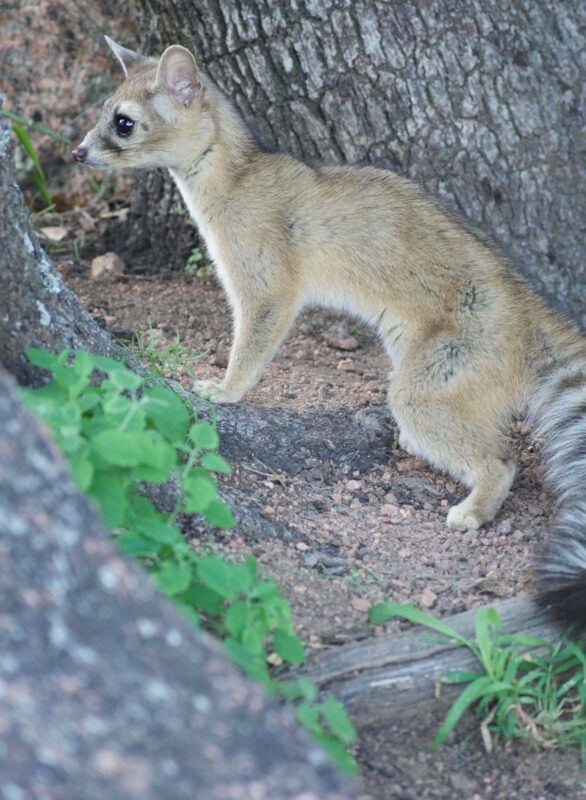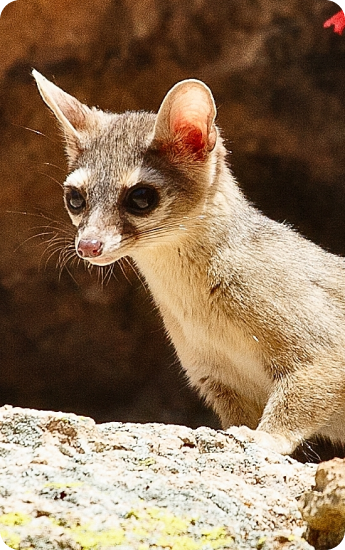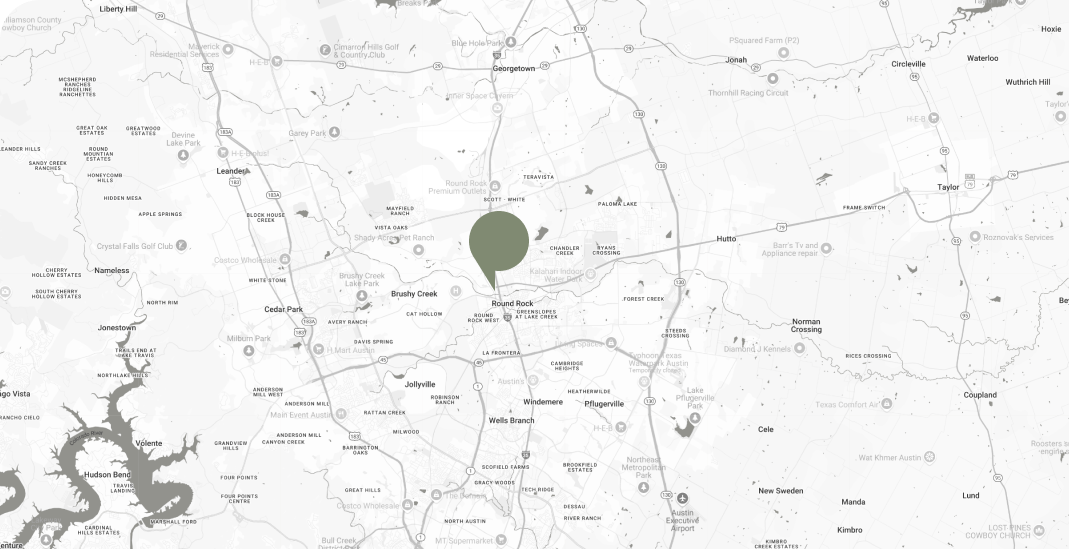Ringtail Cats
Biology & Habits
Ringtail cats are omnivores, meaning they will eat just about anything if it is the right size. Their diets generally consist of mice, rats, birds and their eggs, plants, fruit and insects. Ringtails are solitary animals, except during mating season, breeding season can extend from February into May, but most breeding occurs in March and April. Which occurs from February to June. The gestation period lasts 51 to 53 days,with litter sizes from 1 to 5. However, two and four are typical. Ringtails are also quite vocal, especially the young. They will make sounds similar to a raccoon’s chirps, chatters, clicking sounds and most commonly produce a very loud plaintive bark.
Ringtails can be found from northern Mexico up through Texas and Oklahoma, across into New Mexico, Arizona, though California, Southern Nevada, Utah and Colorado.
Ringtail Cats
Physical Abilities
The ringtail’s body is compact and sleek, with a bushy tail that averages about 12 inches in length. The name ringtail describes their most distinguishing physical characteristic. Their tail is marked by 8 to 9 alternating black and white bands for which the animal is named. The ringtail, like many animals, uses its tail for balance and a distraction to predators. The ringtail also utilizes its tail to perform cart wheels when a quick change in direction is needed. The ringtail is often referred to as a perfect climber. Ringtail’s have semi-retractable claws and a flexible ankle joint giving the ability to rotate its paw’s 180°.



